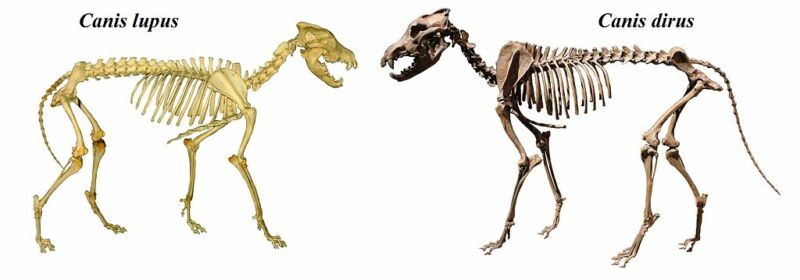
Enlarge (credit: Wikimedia commons)
Dire wolves had a burst of newfound fame with their appearance in Game of Thrones, where they were portrayed as a far larger version of more mundane wolves. Here in the real world, only the largest populations of present-day wolves get as large as the dire wolf, which weighed nearly 70 kilograms. These animals once shared North America—and likely prey—with predators like the smilodon, a saber-toothed cat. Prior to the arrival of humans, dire wolves were far more common than regular wolves, as indicated by the remains found in the La Brea tar seeps, where they outnumber gray wolves by a factor of about 100.
Like the smilodon and many other large North American mammals, the dire wolf vanished during a period of climate change and the arrival of humans to the continent, even as gray wolves and coyotes survived. And with their departure, they left behind a bit of a mystery: what were they?
A new study uses ancient DNA from dire wolf skeletons to determine that they weren’t actually wolves and had been genetically isolated from them for millions of years.





